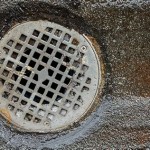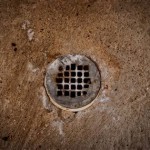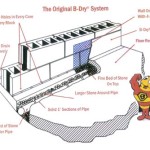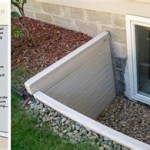Sump Pump Failure: A Flooded Basement's Nightmare
A flooded basement is a homeowner's worst nightmare, and it can happen to anyone, even if you have a sump pump. Sump pumps are essential devices that help keep basements dry by removing excess water. However, even the best sump pumps can fail, and when they do, the results can be devastating.
There are several reasons why a sump pump may fail. One common cause is a power outage. If the power goes out, your sump pump will not be able to operate, and if there is a lot of rain or snowmelt, your basement could quickly flood.
Another common cause of sump pump failure is a clogged discharge line. The discharge line is the pipe that carries water away from the sump pump. If the discharge line becomes clogged with debris, the sump pump will not be able to remove water from the basement, and it could eventually flood.
A third common cause of sump pump failure is a faulty check valve. The check valve is a one-way valve that prevents water from flowing back into the sump basin. If the check valve fails, water can flow back into the sump basin and cause the sump pump to run continuously. This can lead to overheating and eventual failure of the sump pump.
If your sump pump fails, there are several things you can do to minimize the damage. First, try to locate the source of the problem. If the power is out, you can check your circuit breaker panel or fuse box to see if the breaker or fuse for the sump pump has tripped. If the discharge line is clogged, you can try to clear the clog by snaking a wire or hose through the line.
If you are unable to fix the problem yourself, you should call a plumber. A plumber can diagnose the problem and make the necessary repairs. In the meantime, you can try to keep the water out of your basement by using sandbags or towels to block the doorways and windows.
Preventing sump pump failure is the best way to avoid a flooded basement. Here are a few tips to help keep your sump pump running smoothly:
- Test your sump pump regularly. The best way to ensure that your sump pump is working properly is to test it regularly. To test your sump pump, pour a bucket of water into the sump basin. The sump pump should turn on and pump the water out of the basin within a few seconds.
- Keep the discharge line clear. The discharge line is the pipe that carries water away from the sump pump. It is important to keep the discharge line clear of debris, such as leaves, twigs, and dirt. You can check the discharge line by running a hose through it. If the water does not flow freely through the line, it is probably clogged.
- Install a backup sump pump. A backup sump pump is a great way to protect your basement from flooding in the event of a power outage or sump pump failure. Backup sump pumps are typically powered by batteries or a generator, so they will continue to operate even if the power goes out.
By following these tips, you can help prevent sump pump failure and keep your basement dry.

Excessive Flooding And Sump Pump Failures Safety Tips

Here S Why Your Basement Flooded Even When You Have A Sump Pump Forbes Home

What To Do When Sump Pump Failure Leads Basement Flooding

Sump Pump Failure Causes Solutions Everdry Toledo Oh Mi

Sump Pump Failures And Fixes Mr Plumber Raleigh Nc

Sump Pump Failure Airco Mechanical

Basement Waterproofing Lewes De Flooded After Heavy Rain Storms And Sump Pump Failure

Basement Waterproofing Flooded In Vernon Rockville Failed Sump Pump

7 Causes Of Sump Pump Failure

How Home Insurance Covers Flooding From Sump Pump Failure Water
Related Posts







